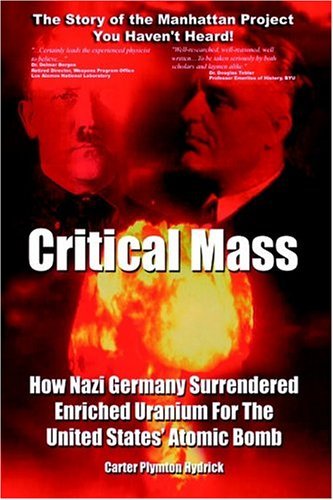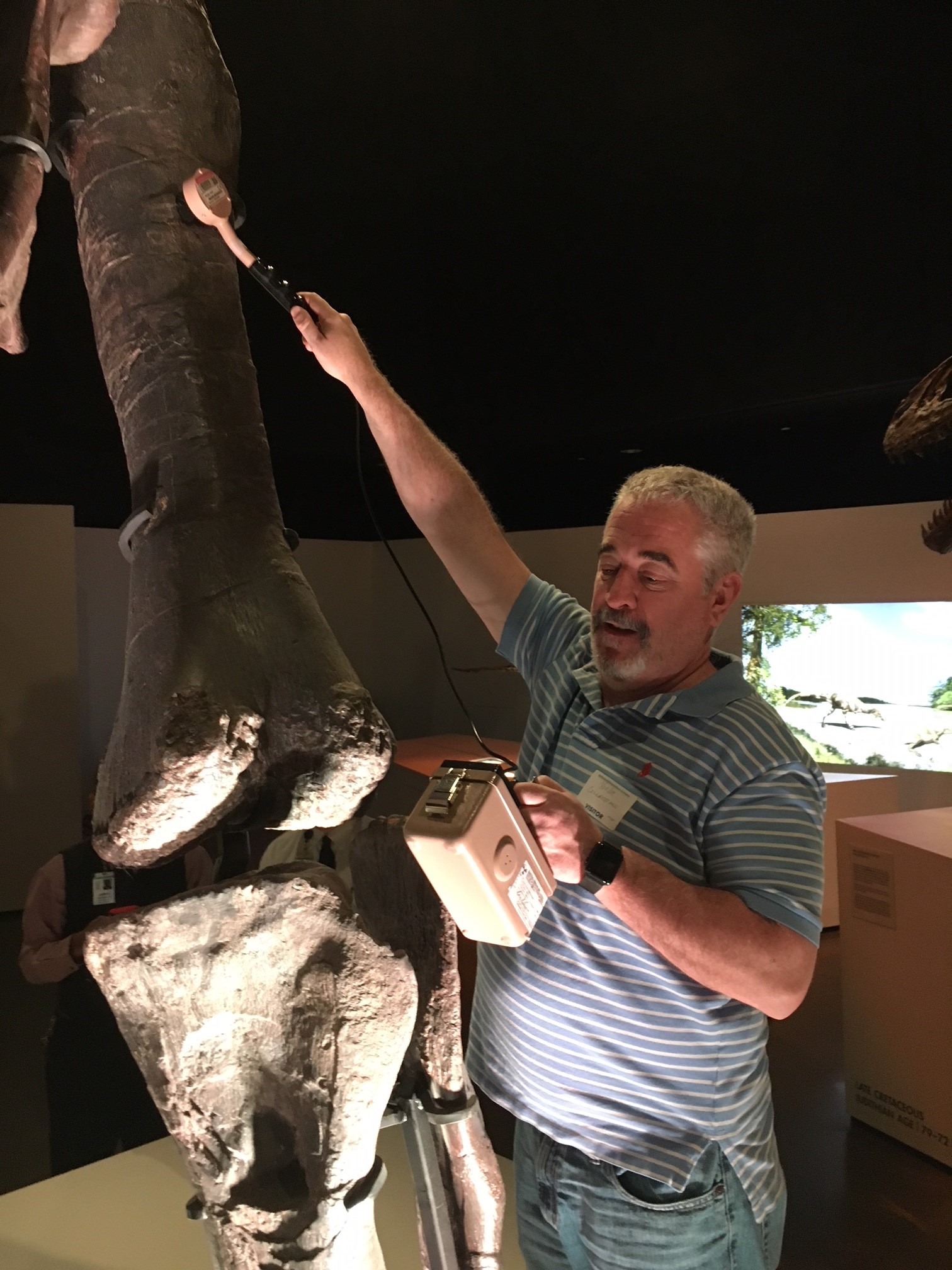Tuesday, December 06, 2016 – 6:30 PM
A guarded secret for decades, learn how enriched uranium from Nazi Germany came to be used in United States’ atomic bombs. Researcher Carter Hydrick will detail the surrender of U-boat 234 and its cargo of 1,120 pounds of uranium that was concealed in nose of the U-boat in sealed cylinders lined with gold. Hydrick has tracked this shipment to the Manhattan Project and both the Hiroshima and Nagasaki atomic bombs.
Book signing of Critical Mass following lecture.
Praise for Critical Mass!
“Compelling … as gripping as good fiction. Hydrick’s book is important history well written.”
Tony Hillerman
New York Times Best Selling Author
Retired Journalism Professor
Decorated Hero of D-Day and the Italian Front
“Certainly leads the experienced physicist to believe.”
Dr. Delmar Bergen, retired
Director, Weapons Program Office
Los Alamos National Laboratory
“The assertion in Critical Mass that the uranium surrendered to U.S. authorities onboard the German submarine U-234 was enriched U-235 [enriched uranium] is certainly a credible conclusion in view of the storage, containment and prevailing shipping conditions.”
Dr. Gary Sandquist
Former Instructor of Nuclear Engineering
United States Military Academy, West Point
“Critical Mass brings to the surface defining new information, long hidden within archives, about the birth of the Atomic Bomb…. Should be in every library.”
D. Ray Smith
Oak Ridge Y-12 (uranium enrichment facility) Historian
“This is a fascinating book…with excellent primary source research.”
Joe Sills
Former United Nations spokesperson
“Critical Mass offers the scholar of modern history and the World War Two history buff important new information about the race for the atomic bomb. Its conclusions, based on primary sources, that the Manhattan Project used atomic bomb components received from Nazi Germany in the bombs dropped on Hiroshima and Nagasaki, appear plausible and logical. Hydrick’s well-written account provides lucid understanding of hitherto unknown and important aspects of the birth of the Nuclear Age.”
Dr. Anthony Stranges
Associate Professor of Modern Military Science and Technology
Texas A&M University
“This book is a well-researched, well-reasoned, well-written persuasive argument for a revised interpretation of an important, perhaps even critical, chapter in our modern history. It deserves a careful reading and to be taken seriously by both scholars and laymen alike.”
Dr. Douglas F. Tobler
Professor of Modern German History, Emeritus
Brigham Young University
“A coherent and well researched history of events that have been covered up for half a centuryexciting and revealing!”
Otis Maclay
Pacifica Radio Host
“The best primary source research I have seen in a long, long time.”
Gordon Fowkes, Lt. Colonel, US Army (Ret),
University of Houston Military History Symposium
Was the uranium surrendered to the United States on a German U-boat really enriched?
“The facts that the uranium captured from Nazi Germany was: 1)stowed in gold-lined containers that, 2) were cylindrical in shape, 3) each possibly carrying half a critical mass, 4) that were described as becoming ‘sensitive and dangerous’ when opened, and 5) should be handled like TNT, certainly leads the experienced physicist to believe the material was enriched uranium. I cannot fathom anyone at the time taking such careful precautions, or claiming such danger, about comparatively harmless natural uranium.”
Dr. Delmar Bergen, retired
Former Director, Nuclear Weapons Program
Los Alamos National Laboratory
How did the Germans obtain the enriched uraniumwas an alleged synthetic rubber plant actually a uranium enrichment facility?
“Based on the information Mr. Hydrick presents, and my own knowledge of two World War Two SBR rubber plants, I find it hard to believe the traditional explanation that the Germans spent four fruitless years trying to bring a rubber plant on line, the technology for which they had previously developed, proven and used. I also cannot comprehend, nor do I believe, a buna plant of that time period consumed as much power as the eighth largest city in the world (Berlinas stated by the directors of the plant).”
George M. Ladzun, retired
Former Director, Process Development, Zeon Chemicals
Former Manager of two synthetic rubber plants
Former Process Engineer for buna plant start-up, BF Goodrich
“The electrical consumption that I.G. Farben’s directors described at their buna plant at Auschwitz is very much in line with the huge electrical requirements for electro-magnetically enriching uranium.”
Dr. Delmar Bergen, retired
Former Director, Nuclear Weapons Program
Los Alamos National Laboratory
“It was not a rubber plant. You can bet your bottom dollar on that.”
Ed Landry
Former President and General Manager
Keystone Polymers, Inc.








